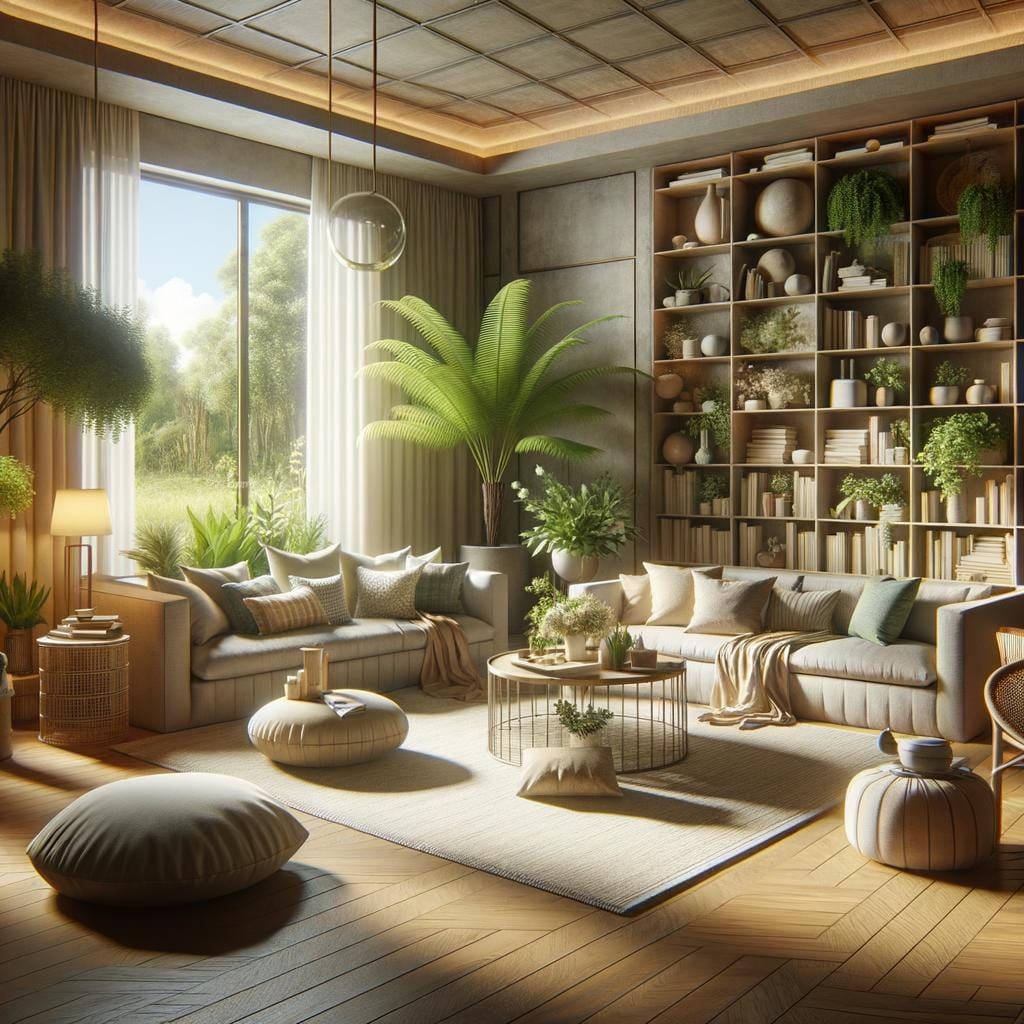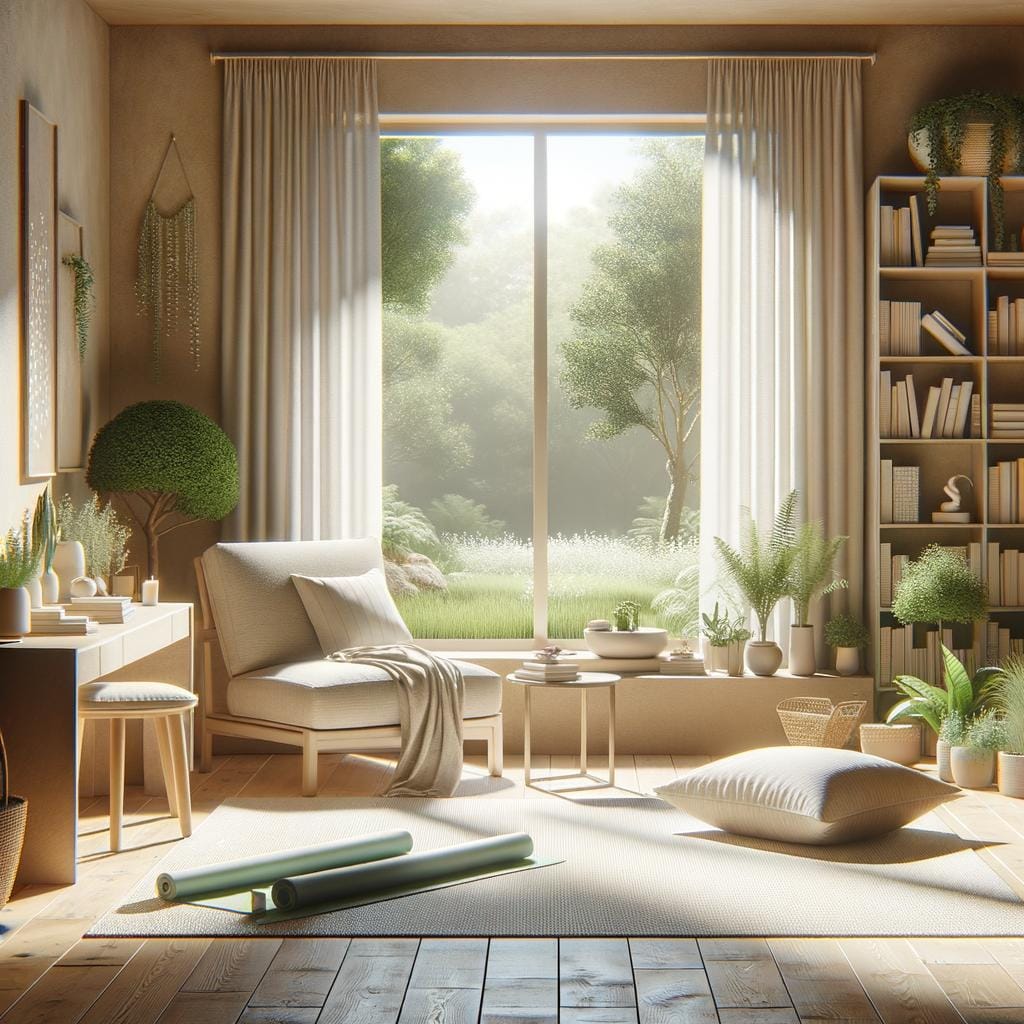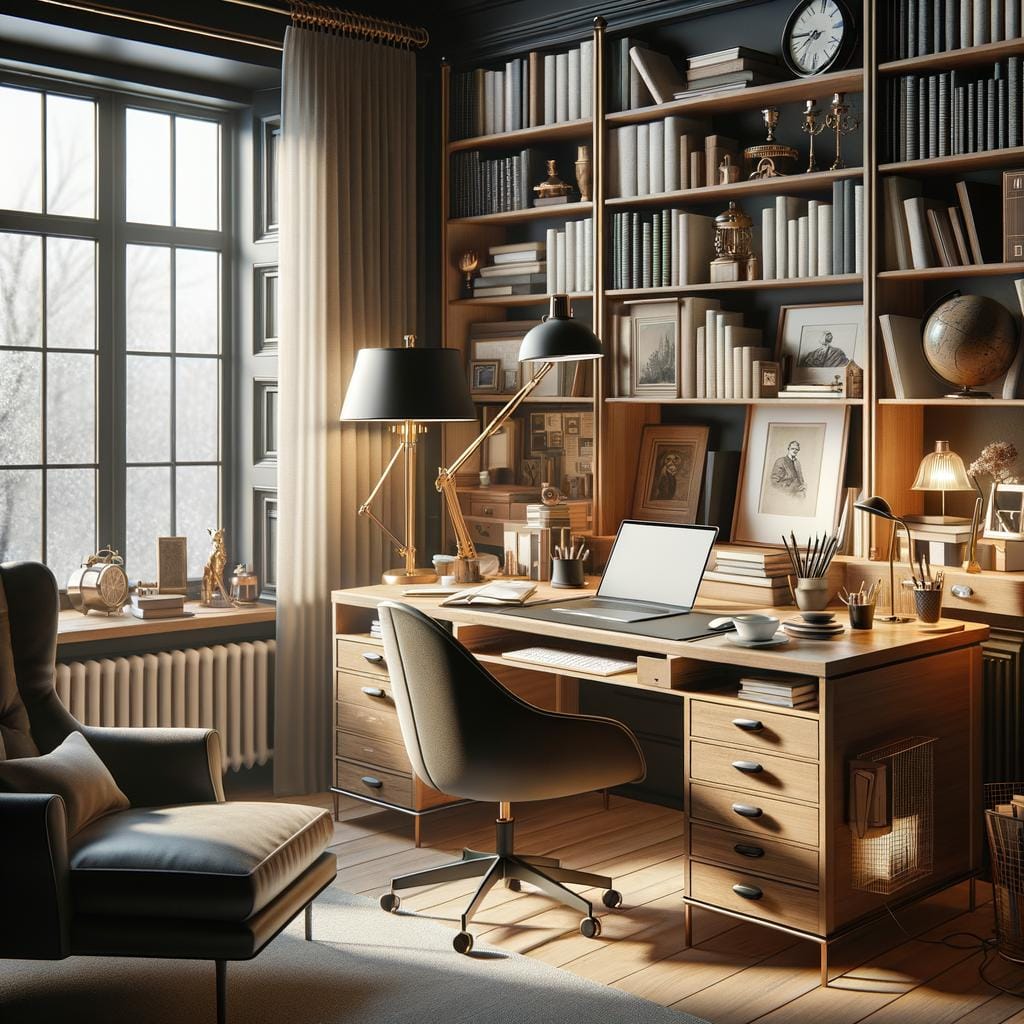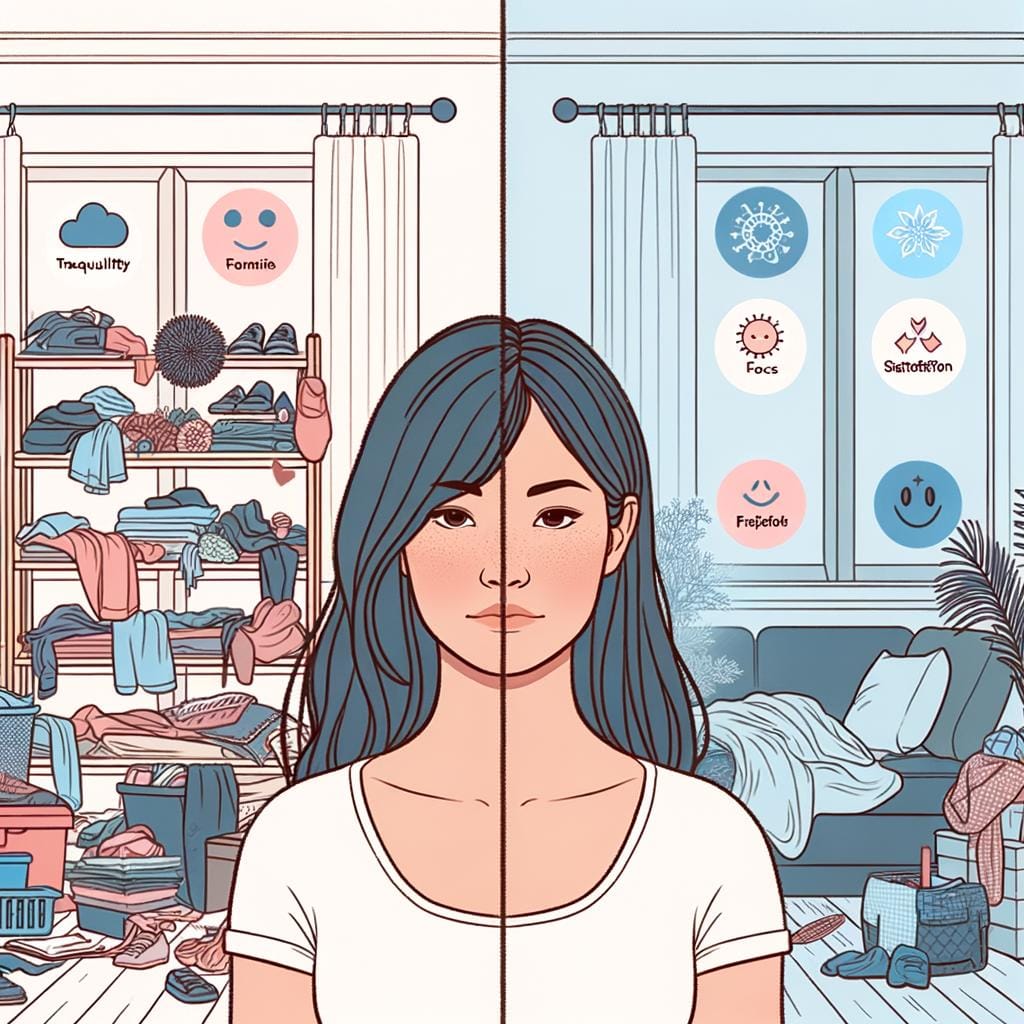Creating calming spaces is essential to our overall well-being and mental health. In today’s fast-paced and constantly connected world, it has become increasingly important to have a sanctuary where we can unwind, relax, and rejuvenate. The physical environment plays a significant role in influencing our mood and emotions, making it crucial to design spaces that promote tranquility and peace.
Understanding how the physical environment impacts our mental well-being is key to creating calming spaces. Research has shown that colors, natural elements, lighting, furniture layout, and organization can all contribute to creating a sense of calm and relaxation. By carefully selecting these elements, we can cultivate an environment that supports our mental health and allows us to escape from the stressors of everyday life.
From choosing the right color palette to incorporating natural elements and soft lighting, there are many ways to design a space that promotes relaxation. By decluttering, organizing, and adding personal touches, we can further enhance the soothing atmosphere of our calming space.
Ultimately, spending time in these environments offers numerous benefits such as stress reduction, mental clarity, and overall well-being. So let’s explore the different ways we can create calming spaces in our homes or workplaces for a healthier mind and body.
Understanding the Impact of Physical Environment on Mental Well-Being
When it comes to understanding the impact of physical environment on mental well-being, it is essential to recognize how our surroundings can greatly influence our mood and overall mental health. The spaces we inhabit have the power to either elevate our well-being or contribute to feelings of stress and anxiety. By creating calming spaces in our homes or workplaces, we can significantly improve our mental health and emotional state.
Research has shown that elements such as color, light, and natural elements play a crucial role in shaping our mental well-being. For example, soft and muted color palettes like pastels or earth tones are known to promote relaxation and reduce feelings of tension. Similarly, incorporating natural elements such as plants, wood accents, or natural light can help create a sense of tranquility and connection with nature, which has been linked to improved mental health outcomes.
In addition to color and natural elements, the layout and design of a space also have a substantial impact on mental well-being. Comfortable furniture arrangements that promote relaxation and social interaction can enhance feelings of comfort and security.
Furthermore, decluttering and organizing a space can create a sense of order and calmness, reducing feelings of overwhelm and promoting mental clarity. By being intentional about the design and ambiance of our surroundings, we can cultivate environments that support our overall well-being.
| Elements | Impact on Mental Well-Being |
|---|---|
| Color Palette | Promotes relaxation and reduces tension |
| Natural Elements | Creates a sense of tranquility and connection with nature |
| Furniture Arrangement | Enhances feelings of comfort and security |
Choosing the Right Color Palette for a Calming Space
Color plays a significant role in influencing our emotions and mood, making it crucial to choose the right color palette when creating calming spaces. Soft and muted tones are often recommended for promoting relaxation and tranquility in a room. Shades of blue, green, and lavender are popular choices for creating a soothing atmosphere, as they are known for their calming effects on the mind.
Research has shown that different colors can have varying psychological impacts. For example, blue is associated with calmness and serenity, while green is linked to nature and harmony. By understanding the psychological effects of colors, individuals can strategically incorporate them into their living spaces to promote a sense of well-being and peace. Warm neutrals like beige and off-white can also create a cozy and serene ambiance in a room.
When selecting a color palette for a calming space, it is essential to consider personal preferences as well. While certain colors may have general associations with relaxation, individual tastes should not be overlooked. Customizing the color scheme based on what brings comfort and peace to each person can enhance the overall effectiveness of the calming space in promoting mental well-being.
| Psychological Impact of Colors | Associated Emotions |
|---|---|
| Blue | Calmness and Serenity |
| Green | Nature and Harmony |
| Lavender | Relaxation and Tranquility |
Utilizing Natural Elements in Design for Relaxation
Natural elements play a crucial role in creating calming spaces that promote relaxation and peace of mind. Incorporating elements such as plants, water features, natural wood furniture, and stone accents can help bring a soothing and grounding vibe to any space. These elements not only add aesthetic appeal but also contribute to improving mental well-being.
When designing a calming space, consider the following natural elements to enhance relaxation:
- Plants: Indoor plants not only add a touch of greenery but also improve air quality and reduce stress. Consider low-maintenance plants like succulents or peace lilies for a serene atmosphere.
- Water Features: The sound of running water has a calming effect on the mind. Incorporate a small tabletop fountain or a wall-mounted water feature to create a sense of tranquility.
- Natural Wood Furniture: Opt for furniture made from natural wood materials such as oak, bamboo, or teak. Wood brings warmth and comfort to a space while adding an organic touch.
In addition to these natural elements, consider highlighting the beauty of stone accents like granite countertops, marble tiles, or quartz tabletops. Stones have grounding properties that can help create a sense of stability and calmness in your living or workspace. By strategically integrating these natural elements into your design, you can transform any space into a peaceful retreat that promotes relaxation and well-being.
Furniture and Layout
When it comes to creating a calming space, furniture and layout play a significant role in setting the tone for comfort and relaxation. The arrangement of furniture and the choice of pieces can greatly impact how inviting and soothing a room feels. Here are some tips for creating a comfortable and inviting space through furniture and layout:
- Choose furniture that is both aesthetically pleasing and comfortable. Opt for pieces with soft, plush upholstery that invite you to sit back and relax.
- Create defined areas within the space for different activities such as lounging, reading, or meditating. Use rugs, room dividers, or strategic placement of furniture to delineate these spaces.
- Consider the flow of the room and ensure that there is enough space to move around comfortably. Avoid cluttering the space with unnecessary furniture or decor items.
In addition to choosing the right furniture pieces, the layout of the room also plays a crucial role in creating a calming atmosphere. By arranging furniture in a way that promotes relaxation and comfort, you can transform any space into a peaceful retreat.
- Place seating areas near natural light sources such as windows or skylights to create a sense of openness and connection to the outdoors.
- Arrange furniture in a way that encourages conversation and social interaction if the calming space will be used for gatherings or relaxation with others.
- Consider incorporating multi-functional pieces such as storage ottomans or nesting tables for added convenience without sacrificing style.
By carefully selecting furniture pieces, considering the layout of the room, and paying attention to details such as flow and functionality, you can create a comfortable and inviting space that promotes relaxation and well-being. Remember that your furniture choices should reflect your personal style while also contributing to the overall ambiance of your calming space.
Incorporating Soft Lighting for a Soothing Atmosphere
Soft lighting plays a crucial role in creating calming spaces that promote relaxation and tranquility. The right lighting can significantly impact the overall mood and atmosphere of a room, making it essential to choose the appropriate fixtures and bulbs for a soothing ambiance. By incorporating soft lighting techniques, you can transform any space into a peaceful retreat where you can unwind and de-stress after a long day.
Dimmer Switches and Warm Light
One effective way to create a soothing atmosphere through lighting is by installing dimmer switches. This allows you to adjust the brightness levels according to your preference, helping you create the perfect ambiance for relaxation. Additionally, opting for warm-toned light bulbs instead of harsh white ones can make a significant difference in creating a cozy and inviting environment.
Use of Ambient Lighting
Ambient lighting, such as wall sconces or table lamps, can help create a gentle glow throughout the room, reducing harsh shadows and creating a more relaxing atmosphere. By strategically placing ambient lighting fixtures around the space, you can evenly distribute light and create a sense of warmth and comfort.
Candlelight and Natural Sources
Incorporating candlelight or natural light sources like sunlight during the day can add an extra layer of tranquility to your calming space. Candles not only provide soft, flickering light but also emit comforting scents that contribute to relaxation. Similarly, allowing natural light to filter into the room during daylight hours can help boost mood and create a connection to the outdoors, further enhancing the calming effect of the space.
Decluttering and Organizing for a Tranquil Environment
Decluttering and organizing are essential components of creating calming spaces in any environment, whether it is a home, office, or even a public space. A serene and tranquil atmosphere can be easily disrupted by clutter and disorganization, which can contribute to feelings of stress and unease. By decluttering and organizing your surroundings, you can create a sense of calmness and serenity that promotes relaxation and mental well-being.
Benefits of Decluttering
Decluttering not only improves the visual appeal of a space but also has numerous benefits for mental health. Studies have shown that physical clutter can lead to increased levels of cortisol, the stress hormone, in our bodies. By clearing out unnecessary items and organizing our belongings, we can reduce feelings of anxiety and overwhelm. A clutter-free environment promotes clarity of mind and allows us to focus on the present moment.
Tips for Organizing
When it comes to organizing your space for tranquility, there are several strategies you can employ. Start by categorizing your belongings into different groups such as essentials, sentimental items, and things to donate or discard. Utilize storage solutions like bins, baskets, shelves, and closet organizers to keep things tidy and easily accessible. Implement a system for regular maintenance to prevent clutter from accumulating again. By maintaining an organized space, you can enjoy a peaceful environment that nurtures your well-being.
Decluttering and organizing not only contribute to creating calming spaces but also foster a sense of control over our surroundings. When we take the time to declutter and organize our homes or workspaces, we are actively investing in our mental health and overall well-being. So next time you’re looking to enhance the relaxing ambiance of your environment, consider decluttering and organizing as essential steps towards creating a tranquil space where you can unwind and recharge.
Adding Personal Touches
When it comes to creating calming spaces, adding personal touches is key to making a space truly your own. Personalization can help you feel more connected and at ease in your environment, ultimately enhancing the overall calming effect of the space. Whether it’s incorporating cherished belongings, meaningful artwork, or sentimental items, customizing your calming space can evoke a sense of comfort and familiarity.
One way to add personal touches to your calming space is by displaying items that bring you joy and evoke positive emotions. This could include family photos, souvenirs from favorite trips, or artwork created by loved ones. By surrounding yourself with objects that hold personal meaning, you can create a space that reflects your unique personality and interests, enhancing the overall soothing atmosphere of the room.
In addition to sentimental items, incorporating elements that promote relaxation and wellness can further enhance the calming quality of your space. This could involve adding plants for a touch of nature indoors, using essential oils for aromatherapy, or incorporating mindfulness practices like yoga or meditation into the design of the room.
By infusing your personal interests and self-care routines into the design of your calming space, you can create a sanctuary that not only looks great but also supports your mental well-being on a deeper level.
Benefits of Spending Time in Calming Spaces
In conclusion, creating calming spaces in our homes or workplaces is essential for our overall well-being and mental health. By understanding the impact of physical environment on our mental well-being, we can intentionally design spaces that promote relaxation, stress reduction, and mental clarity. Utilizing natural elements, choosing the right color palette, and incorporating soft lighting all play a crucial role in creating a soothing atmosphere.
Furniture selection and layout also contribute to the comfort and inviting nature of a calming space. By decluttering and organizing our surroundings, we can achieve a tranquil environment that promotes a sense of peace and serenity. Personal touches within the space can further enhance the calming effects, making it a unique and restorative sanctuary for individuals to unwind and rejuvenate.
Spending time in calming spaces not only allows us to relax and reduce stress but also provides mental clarity and improves overall well-being. By prioritizing the creation of these serene environments in our daily lives, we can cultivate a sense of balance, harmony, and inner peace – ultimately enhancing our quality of life. Embracing the benefits of spending time in calming spaces is a valuable practice that supports our mental health and emotional wellness.
Frequently Asked Questions
How Do You Create a Calming Environment?
Creating a calming environment involves incorporating elements that promote relaxation and peace. This can be achieved by using soothing colors like blues or greens, incorporating soft lighting, adding comfortable seating, and including natural elements like plants or nature-inspired decor.
How Do You Make a Calm Place?
Making a calm place requires thoughtful consideration of the space’s layout and design. This can involve decluttering to create an open and airy atmosphere, choosing furniture that is both comfortable and aesthetically pleasing, minimizing noise distractions, and personalizing the space with items that bring joy and tranquility.
What Is a Calming Space?
A calming space is an area purposely designed to evoke feelings of serenity and tranquility. This could be a cozy nook in a home filled with soft blankets and pillows, a garden retreat with lush greenery and the sound of trickling water, or even a quiet corner in a bustling office where one can relax and recharge away from distractions.
Ultimately, a calming space should be tailored to individual preferences and needs to provide a sense of relaxation and rejuvenation.

Hello, I’m April Denton, your go-to expert for all things home decluttering and organization. With over a decade of experience helping individuals transform their living spaces into serene, clutter-free sanctuaries, I am passionate about the life-changing benefits of decluttering. My journey into the world of organization began out of necessity, juggling a busy career and a bustling household. I quickly realized that a well-organized home was the key to a more balanced, stress-free life.





